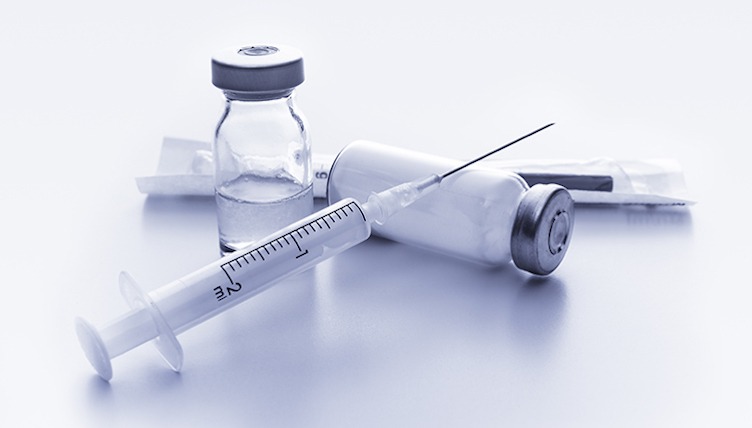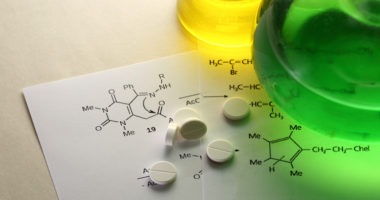Market Watch: Parenteral Drugs on the Rise
With the rise of biologic-based drug development, the number of parenteral drugs under development and receiving approval is poised to increase, so what do the numbers show?.
Parenteral drugs, whether a small-molecule or biologic-based drug substance, has increased their share of the overall drug market although solid-dosage products still prevail. DCAT Value Chain Insights examines recent approvals of new molecular entities to see which parenteral drugs are making the mark
New molecular approvals in 2016.
In 2016, the US Food and Drug Administration’s (FDA) Center for Drug Evaluation and Research (CDER) approved 22 new molecular entities (NMEs) (see Table I at end of article), which was a 51% drop compared with the 45 NMEs approved in 2015 and the lowest total on NME approvals since 2010 when 21 NMEs were approved (see Table II). From 2011 to 2015, NME approvals had been on an upward trajectory (with the exception of 2013) with 30 NMEs approved in 2011 and 39 in 2012. The exception was in 2013, which had a decline to 27 NMEs, but levels jumped again to 41 NMEs in 2014 and peaked at a recent high of 45 approvals in 2015 (see Table II) (1).
On a molecule basis, the 22 NME approvals in 2016 consisted of 13 small-molecule drugs, seven biologics, and two radioactive diagnostic imaging agents (see Tables I [at end of article] and II). The percentage of biologic-based drugs approved relative to all NME approvals reached a recent high in 2016, accounting for 32% of all NMEs approved, compared to the prior two years in which biologics accounted for 27% of total NME approvals in 2014 and 2015. (see Table II). With the approval of the seven biologics and two radioactive diagnostic imaging agents in 2016, the percentage of small-molecule drug NME approvals hit a recent low in 2016, accounting for 59% of total NME approvals. The recent high was in 2013 when 81% of NME approvals were small molecules. (see Table II) (1).
| Table II: Small Molecule and Biologics New Molecular Entities Approved by the US Food and Drug Administration’s Center for Drug Evaluation and Research, 2010 to 2016. | ||
| Year | Number of New Molecular Entities (NMEs) Approved | Percentage relative to total NME approvals and number of small molecules and biologics approved as NMEs |
| 2010 | 21 NMEs approved | 71% small molecules (15 NMEs) 29% biologics (6 NMEs) |
| 2011 | 30 NMEs approved |
77% small molecules (23 NMEs) |
| 2012 | 39 NMEs approved |
79% small molecules (31 NMEs) |
| 2013 | 27 NMEs approved |
81% small molecules (22 NMEs) |
| 2014 | 41 NMEs approved |
71% small molecules (29 NMEs) |
| 2015 | 45 NMEs approved* | 71% small molecules (32 NMEs) and 1 insulin analog NME approved as a new drug application)***** 27% biologics (12 NMEs) |
| 2016 | 22 NMEs approved** |
59% small molecules (13 NMEs) |
|
*In 2011, 23 small-molecule drugs and 1 radioactive diagnostic imaging were approved as new drug applications (NDAs) Source: US Food and Drug Administration’s Center for Drug Evaluation and Research and company information. |
||
Of these 22 NME approvals, 13, or 59%, of the NMEs approved, were parenterals (11 parenteral drugs and two diagnostic agents), seven, or 32%, were oral drugs, and two or 8% were other (one a topical drug and one;ophthalmic; (see Table I at the end of article). Among the large pharmaceutical drugs, the parenteral drugs approved as NMEs in 2016 were: Biogen’s Spinraza (nusinersen), a drug for treating the rare disease of spinal muscular atrophy; Biogen’s Zinbryta (daclizumab), a multiple sclerosis drug; Eli Lilly and Company’s Taltz (ixekizumab) for treating moderate-to-severe plaque psoriasis; Lilly’s Lartruvo (olaratumab) for treating certain types of soft tissue sarcoma; Merck & Co.s Zinplava (bezlotoxumab), an anti-bacterial biologic for treating Clostridium difficile infection; Roche’s Tecentriq (atezolizumab), an anti-bladder-cancer drug; Sanofi’s Adlyxin (lixisenatide) for improving glycemic control in patients with Type II diabetes; and Teva’s Cinqair (reslizumab) for treating severe asthma;
Biogen received two NME approvals in 2016 that were parenteral drugs: Spinraza (nusinersen), a small-molecule drug for treating the rare disease of spinal muscular atrophy (SMA), and Zinbryta (daclizumab), a biologic for treating multiple sclerosis. Biogen is partnered with Ionis Pharmaceuticals, a Carlsbad, California-based pharmaceutical company, for Spinraza. Biogen teamed with Ionis (formerly Isis Pharmaceuticals) in 2012 to develop Spinraza in a deal worth $299 million. Spinraza is projected by some analysts to be a blockbuster drug as it is approved for use across a range of SMA patients and is the first drug approved for this rare genetic disease, according to the FDA (1).
For Zinbryta, Biogen is sharing co-promotion activities with AbbVie in the US, European Union, and Canada. Biogen is solely responsible for commercialization of the drug in the rest of the world. Biogen is responsible for manufacturing and research and development activities. Zinbryta joins Biogen’s multiple sclerosis franchise, which is the company’s leading product area, which had 2015 revenues of $8.58 billion, representing 93% of the company’s total revenues.
Lilly received two NME approvals in 2016, both biologic-based parenterals: Taltz (ixekizumab) for treating moderate-to-severe plaque psoriasis, and Lartruvo (olaratumab) for treating certain types of soft tissue sarcoma in combination with another anti-cancer drug, doxorubicin. Taltz joins Amgen’s Enbrel (etanercept) and AbbVie’s Humira (adalimumab), both blockbuster drugs for the same indication. Enbrel, which is marketed by Amgen in the US and Canada and by Pfizer outside of those regions, had 2015 sales of $5.36 billion for Amgen in the US and Canada and sales of $3.33 billion for Pfizer outside the US and Canada. AbbVie’s Humira had 2016 global sales of $16 billion. Lartruvo join Lilly’s oncology franchise, which had $3.5 billion in 2015 sales (1).
Zinplava joins Merck’s anti-infectives portfolio. Bezlotoxumab was developed by researchers at the University of Massachusetts Medical School’s MassBiologics Laboratory in conjunction with Medarex (now part of Bristol-Myers Squibb) and was licensed to Merck & Co (1).
Roche’s Tecentriq represents the company’s first commercial entry for a PD-1/PD-L1 inhibitor, an important new class of immuno-oncology drugs, and is forecast by some analysts to reach blockbuster status. In January 2017, the FDA accepted a supplemental biologics license application from Roche for an additional indication for Tecentriq for treating a certain type of advanced bladder cancer and also granted priority review for this indication (1).
Sanofi received approval for its small-molecule anti-diabetes drug, Adlyxin (lixisenatide), for improving glycemic control in patients with Type II diabetes. The drug is an addition to the company’s diabetes franchise, which is the company’s leading product area with 2015 revenues of EUR 7.58 billion ($8.03 billion). Sanofi’s diabetes franchise has been facing generic competition for its top-selling product, Lantus (insulin-glargine), which had 2015 sales of EUR 6.39 billion ($6.77 billion). Adlyxin is a glucagon-like peptide-1 (GLP-1) receptor agonist, which is a hormone that helps normalize blood sugar levels. Adlyxin will join other GLP-1 receptor agonists already on the market, which include Novo Nordisk’s Victoza (liraglutide recombinant) and Lilly’s Trulicity (dulaglutide). Victoza and Trulicity had 2015 sales of DKK 18 billion ($2.56 billion) and $248 million, respectively (1).
Reference
1. F. Mirasol, “2016 NME Drug Approvals Drop After Recent High,”DCAT Value Chain Insights (January 2017).
| Table I: 2016 New Molecular Entities (New Drug Applications (NDAs) and Original Biologics License Applications (BLAs) Approved by the US Food and Drug Administration’s Center for Drug Evaluation and Research. | |||
| Company | Property name (active ingredient); application type | Indication | Dosage form; route of administration |
| AbbVie and Roche* | Venclexta (venetoclax); NDA | Chronic lymphocytic leukemia in patients with a specific chromosomal abnormality | Tablet; oral |
| Acadia Pharmaceuticals | Nuplazid (pimavanserin); NDA | Hallucinations and delusions associated with psychosis experienced by some people with Parkinson’s disease | Tablet; oral |
| Advanced Accelerator Applications | Netspot (gallium Ga 68 dotatate injection); NDA | Diagnostic imaging agent to detect rare neuroendocrine tumors | Powder; intravenous |
| Biogen** | Spinraza (nusinersen); NDA | Spinal muscular atrophy | Solution; intrathecal |
| Biogen | Zinbryta (daclizumab); BLA | Multiple sclerosis | Injectable;injection |
| Blue Earth | Axumin (fluciclovine F 18); NDA | Diagnostic imaging agent to detect recurrent prostate cancer | Solution; intravenous |
| Clovis Oncology | Rubraca (rucaparib); NDA | Certain types of ovarian cancer | Tablet; oral |
| Eli Lilly and Company | Lartruvo (olaratumab); BLA | Certain types of soft tissue sarcoma | Injectable;injection |
| Eli Lilly and Company | Taltz (ixekizumab); BLA | Moderate-to-severe plaque psoriasis | Injectable;injection |
| Elusys Therapeutics | Anthim (obiltoxaximab); BLA | Inhalational anthrax in combination with appropriate antibacterial drugs | Injectable;injection |
| Gilead Sciences | Epclusa (sofosbuvir and velpatasvir); NDA | All six major forms of hepatitis C virus | Tablet; oral |
| Intercept Pharmaceuticals | Ocaliva (obeticholic acid); NDA | Rare, chronic liver disease | Tablet; oral |
| Jazz Pharmaceuticals*** | Defitelio (defibrotide sodium); NDA | Hepatic veno-occlusive disease | Solution; IV (infusion) |
| Merck & Co. | Zepatier (elbasvir and grazoprevir); NDA | Chronic hepatitis C virus, genotypes 1 and 4 | Tablet; oral |
| Merck & Co. | Zinplava (bezlotoxumab); BLA | Clostridium difficile infection for patients 18 years of age or older | Injectable;injection |
| Pfizer**** | Eucrisa (crisaborole); NDA | Mild-to-moderate eczema (atopic dermatitis) for patients two years of age and older | Ointment; topical |
| Roche | Tecentriq (atezolizumab) BLA | Urothelial carcinoma, the most common type of bladder cancer | Injectable;injection |
| Sanofi | Adlyxin (lixisenatide); NDA | Type 2 diabetes for improving blood-sugar levels | Solution;
subcutaneous |
| Sarepta Therapeutics | Exondys 51 (eteplirsen); NDA | Duchenne muscular dystrophy | Solution; iV (infusion) |
| Shire | Xiidra (lifitegrast ophthalmic solution); NDA | Dry-eye disease | Solution/drops; ophthalmic |
| Teva Pharmaceuticals | Cinqair (reslizumab); BLA | Severe asthma | Injectable; injection |
| UCB | Briviact (brivaracetam); NDA; | Partial onset seizures in patients age 16 years and older with epileps | Tablet; oral |
|
* Venclexta (venetoclax) is jointly commercialized by AbbVie and Genentech, a member of the Roche Group, in the US and commercialized by AbbVie outside of the US. Source: US Food and Drug Administration’s Center for Drug Evaluation and Research and company information. |
|||





